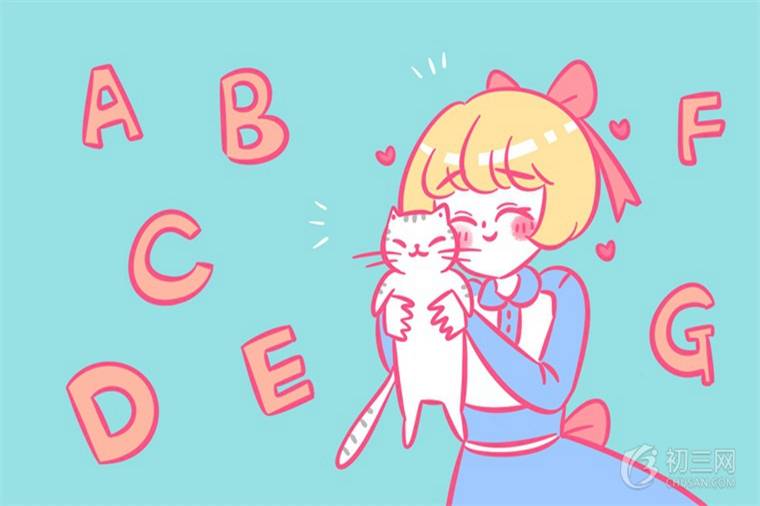请选择
英语语法的精髓在于掌握语言的使用,所以同学们要想学好英语,一定要熟练的掌握各种语法的使用规则,接下来给大家分享初中英语语法总复习必背考点,供参考。

三种从句的知识点
1.宾语从句
在复合句中,由一个句子充当宾语,这个句子叫做宾语从句。宾语从句主要有三种类型,分别是that引导的宾语从句、if或whether引导的宾从、连接代词和连接副词引导的宾语从句。常见的宾语从句引导词:that、if、whether、what、who、where、why和how。
2.定语从句
定语从句在中考和高考中出现的频率都非常高。在复合句中,修饰名词或代词的从句叫定语从句。被修饰的名词或代词叫先行词。定语从句一般放在先行词的后面。常见的关系代词包括that,which,who(宾格whom,所有格whose),as等,关系副词包括where,when,why等。
3.状语从句
状语从句就是由一个句子在复合句中充当状语。所以状语从句又可以分为时间状语从句、地点状语从句、原因状语从句、目的状语从句、结果状语从句等等。每种状语从句都有特定的引导词:
地点状语从句:where,wherever
时间状语从句:when, while, as, before, until, till, since
原因状语从句:because, since,as, now that, not that…, but that…, seeing that, considering that, in that
目的状语从句:so, so that, in order that, that, to the end that, in case,for fear that,lest
结果状语从句:so...that, such that, so that, with the result that
方式状语从句:as, as if, as though
让步状语从句:though, although, as, even if, even though, whether, no matter whether...or, no matter with
比较状语从句:as...as, not as/so...as, than, the more...the more...
定冠词
1、特指某些人或事物,或者谈话中提到过的人和事。
例:This is the house where my father once lived.
2、用在方位、方向名词前,表示特定方向或方位。
例:the east 东方,the left 左边,at the top 在顶上
3、用在某些乐器前,表示演奏。
例:play the piano/violin/guitar
4、指世上独一无二的事物,用在海洋、江河、海峡等地理名词前或者普通名词构成的国家名称、机关团体等专有名词前。
例:the sun 太阳 the moon 月亮 the earth 地球 the USA 美国
the Great Wall 长城 the Huanghe River 黄河
5、用在序数词和形容词最高级前,以及形容词only,very,same等前面。
例:This is the second time that you have been late this month.
这是你这个月第二次迟到。
6、与复数名词连用,表示整个群体。如在姓氏复数前,则表示一家人。
例:They are the teachers of this school. (指全体老师)
They are teachers of this school.(指部分老师)
The Bakers came to see me yesterday.贝克一家人昨天来看我。
7、与某些形容词连用,形容词名词化,代表一类人。
例:the poor 穷人 the sick 病人
8、用在某些习惯语中。
例:In the morning 在早上 by the way 顺便地 at the begining 在一开始
注:在某些习惯语中不能加the
例:at noon 在中午 at dusk在黄昏
不定冠词a、an的用法
1、a/an+可数名词单数形式,表示"一" 个。
例:There is an apple on the table. 桌子上有一个苹果。
2、表示一类人和东西。
例:A puma can be dangerous.狮子可能有危害性。
3、表示"某一个"的意思.
例:A girl is waiting for you. 某个女孩在等你。
4、 表示"同一"的意思。
例:The two pants are much of a size. 这两条裤子长度差不多。
5、 表示"每一"的意思。
例:We watch movie 2 times a week. 我们每周看两次电影。
6、用在单数可数名词前,表示身份、职业。
例:My sister is a designer. 我姐姐是个设计师。
7、第一次提到的人或事物,但不特别指明是哪一个。
例:Long long ago there was an old king who had a very beautiful daughter.很久很久以前,有一个年老的国王,他有一个非常美丽的女儿。
8、特定句式搭配和短语中。
例:He is quite a good actor.他是一个相当好的演员。
Don't be in such a hurry. 不要如此匆忙。
What a pretty girl she is!她是一个多么漂亮的女孩呀!
a lot of许多 a couple of一对 a great many很多 a dozen一打 a great deal of 大量
动词的时态
1、动词的时态一共有16种,以ask为例,将其各种时态的构成形式列表如下:
现在时 过去时 将来时 过去将来时
一般 ask / asks asked shall/will ask should/would ask
进行 am/is/are asking was/were asking shall/will be asking should/would be asking
完成 have/has asked had asked shall/will have asked should/would have asked
完成进行 have/has been asking had been asking shall/will have been asking should/would have been asking
2、现在完成时与一般过去时的区别:
(1)现在完成时表示过去发生的动作或存在的状况,但和现在有联系,强调的是对现在造成的影响或结果,它不能同表示过去的时间状语连用,汉译英时可加“已经”等词。简言之,利用过去,说明现在。如:
I have already read the novel written by the world-famous writer. (已经看过,且了解这本书的内容)
(2)一般过去时只表示过去发生的动作或状态,和现在无关,它可和表示过去的时间状语连用,汉译英时可加“过”,“了”等词。简言之,仅谈过去,不关现在。如:
I read the novel last month. (只说明上个月看了,不涉及现在是否记住)
I lived in Beijing for ten years.(只说明在北京住过十年,与现在无关)
3、现在完成时与现在完成进行时的区别:
两者都可以表示“从过去开始一直持续到现在”,在含义上如着重表示动作的结果时,多用现在完成时,如着重表示动作一直在进行,即动作的延续性时,则多用现在完成进行时。一般不能用于进行时的动词也不能用于现在完成进行时。
I have read that book.我读过那本书了。
I have been reading that book all the morning. 我早上一直在读那本书。
4、一般将来时的表达方式:
(1)will/shall+动词原形 表示将来发生的动作或存在的状态 My sister will be ten next year.
(2)be going to+动词原形 含有“打算,计划,即将”做某事,或表示很有可能要发生某事 It’s going to clear up.We’re going to have a party tonight.
(3)be + doing 进行时表示将来 go, come, start, move, leave, arrive等词可用进行时表示按计划即将发生的动作 He is moving to the south.Are they leaving for Europe?
(4)be about to + 动词原形 表示安排或计划中的马上就要发生的动作,后面一般不跟时间状语 I was about to leave when the bell rang.The meeting is about to close.
(5)be to + 动词原形 表示按计划进行或征求对方意见 We’re to meet at the school gate at noon.
(6)一般现在时表示将来 时刻表上或日程安排上早就定好的事情,可用一般现在时表示将来 The meeting starts at five o’clock.The plane leaves at ten this evening.